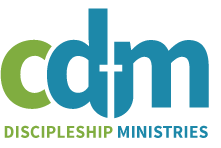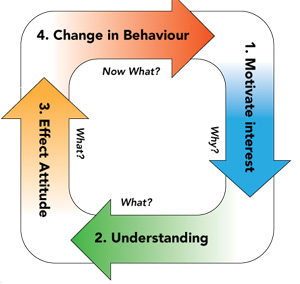I have often asked my classes what the image of God is. The typical answer is we are both spirit.
When God told Adam it was not good for him to be alone, He was giving Adam one of those teachable moments, when he would be taught something new about himself and his God. Instead of giving Eve to Adam right away, He instead sends the animals to him to name. Why? So Adam could observe that with every animal species there were male and female. Adam would soon discover he was alone, except for God.
The Scripture is clear that God only needs one thing – Himself – the Trinity. They live in perfect harmony with each other. God created within man the same desire for community. It was not good for him to be alone because he was created in the image of the Trinitarian God.
Wally builds on the three fundamental aspects of relating discovered from his analysis of the Trinitarian relationships between the Father, Son and Holy Spirit: knowledge of one another, access to one another and delight in one another. Incorporating these three Trinitarian elements into our relationships with God, then our family, our church and the world is the thrust of his book.
What helped me as I worked through this book was its practical emphasis – taking us from the theoretical to seeing how it works in real life. To do this, Wally takes us through the life of Kevin, a man struggling with God, his family, and beyond, and how Wally was able to walk with him through how understanding the Trinity teaches us how to improve our relationships with the people in our lives.
This book could be described as John Piper’s Desiring God on steroids. Both emphasize delighting in God, but Wally puts it on a much more workable foundation, especially as we get to see it blossom in Kevin’s life.
I had the pleasure of spending a few hours with Wally at General Assembly. I got to hear his heart for God’s church, and the families in it that are hurting because they do no know God or understand the fundamentals of His working in and through relationships.
This book is for personal study, and it can be used in groups. My hope is you will use it both ways.

 Years ago it was established there are six basic levels by which actions verbs are measured:
Years ago it was established there are six basic levels by which actions verbs are measured: We have looked at all four learning styles. Did you find where you fit? Even more, have you learned to appreciate that not everyone learns in the same way you learn? This time I want to go a step further and explain how learning styles fit in different cultural settings, and next time how it even affects different denominations.
We have looked at all four learning styles. Did you find where you fit? Even more, have you learned to appreciate that not everyone learns in the same way you learn? This time I want to go a step further and explain how learning styles fit in different cultural settings, and next time how it even affects different denominations. Every week your lesson will contain four parts. (If you need more details on each of these, re-read the previous Equip Tips.)
Every week your lesson will contain four parts. (If you need more details on each of these, re-read the previous Equip Tips.)